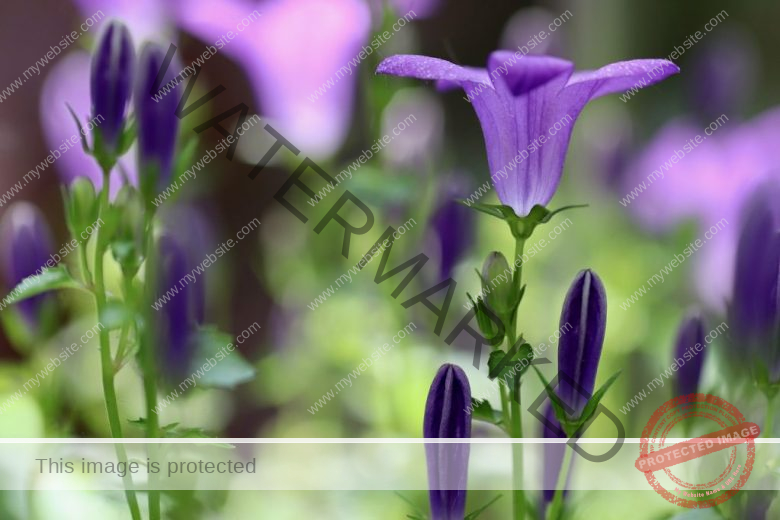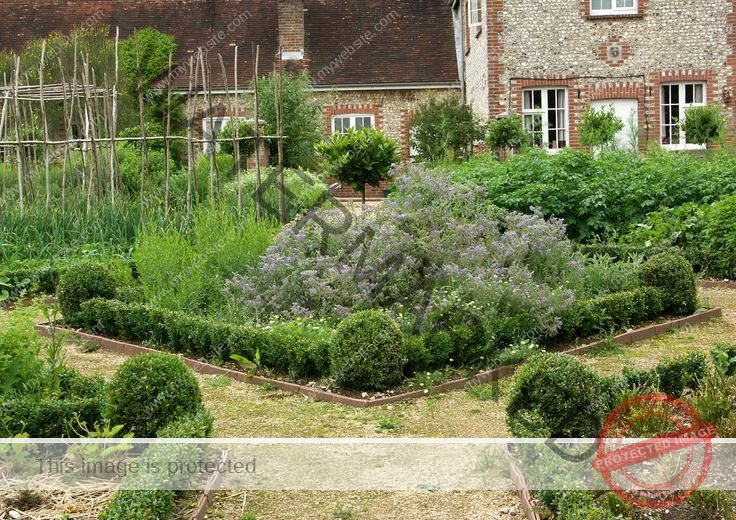Creating a garden filled with beautiful, unique flowers can transform any outdoor space into a vibrant, lively haven. Among the many flower varieties available, bell-shaped flowers stand out for their charming, delicate appearance. Their distinctive shape and often vibrant colors make them an excellent choice for gardeners looking to add a touch of elegance and whimsy to their garden. These flowers not only enhance the aesthetic appeal of a garden but also attract pollinators, contributing to a healthy and thriving ecosystem.
Bell-shaped flowers come in a wide range of species, each offering unique characteristics and growing requirements. From the classic beauty of the bluebell to the exotic allure of the lily of the valley, there is a bell-shaped flower to suit every gardener’s taste and climate. These flowers can be used in various garden designs, whether you’re creating a cottage garden, a modern landscape, or a wildlife-friendly habitat. Their versatility and charm make them a favorite among both novice and experienced gardeners.
The Most Beautiful Bell-Shaped Flowers to Add to Your Garden
In this comprehensive guide, we will explore some of the most beautiful bell-shaped flowers to add to your garden. We will delve into their unique features, growing conditions, and tips for ensuring they thrive. Whether you’re looking to create a striking floral display or simply add a few new plants to your collection, this guide will provide you with the inspiration and knowledge you need to make informed choices.
Campanula (Bellflower)
Description and Varieties
Campanula, commonly known as bellflower, is a genus that includes over 500 species of annuals, biennials, and perennials. These flowers are known for their beautiful bell-shaped blooms, which come in shades of blue, purple, white, and pink. The most popular varieties include Campanula persicifolia (peach-leaved bellflower), Campanula carpatica (Carpathian bellflower), and Campanula portenschlagiana (Dalmatian bellflower). Each variety has its own unique characteristics, making it easy to find a bellflower that suits your garden’s specific needs and aesthetic.
Growing Conditions
Bellflowers prefer well-drained soil and can thrive in full sun to partial shade. They are relatively low-maintenance and can tolerate a range of soil types, though they perform best in soil that is rich in organic matter. Regular watering is essential, especially during dry periods, to keep the soil moist but not waterlogged. Bellflowers are hardy plants that can withstand cold temperatures, making them suitable for gardens in various climates.
Planting and Care Tips
When planting bellflowers, space the plants according to the specific variety’s growth habit to allow for adequate air circulation. This helps prevent fungal diseases and ensures healthy growth. Deadheading spent blooms will encourage continuous flowering and keep the plants looking neat. Bellflowers can be prone to slug and snail damage, so consider using organic slug repellents or barriers to protect the plants. In colder regions, apply a layer of mulch around the base of the plants in late fall to protect the roots from freezing temperatures.
Read Also: How to Save an Overwatered Aloe Plant: Mistakes You’re Making and How to Fix Them
Digitalis (Foxglove)
Description and Varieties
Digitalis, commonly known as foxglove, is another popular bell-shaped flower known for its tall spikes of tubular blooms. These flowers come in various colors, including pink, purple, white, and yellow. The most common species is Digitalis purpurea, which is often seen in cottage gardens and wildflower meadows. Other notable varieties include Digitalis grandiflora (yellow foxglove) and Digitalis lutea (straw foxglove). Foxgloves add height and drama to any garden, making them a favorite among gardeners looking to create a focal point.
Growing Conditions
Foxgloves prefer well-drained, fertile soil and partial shade, though they can tolerate full sun in cooler climates. They are biennial plants, meaning they typically flower in their second year of growth. To ensure continuous blooms, it’s a good idea to plant foxgloves in succession each year. Regular watering is essential, especially during dry spells, to keep the soil consistently moist. Foxgloves are relatively hardy and can tolerate cold temperatures, but they may require protection in extremely harsh winters.
Planting and Care Tips
When planting foxgloves, choose a location with good air circulation to prevent fungal diseases. Space the plants about 1 to 2 feet apart to allow for adequate room for growth. Deadhead spent flowers to encourage additional blooms and prevent self-seeding, which can lead to unwanted spreading. Foxgloves can be toxic if ingested, so take care when planting them in areas accessible to children and pets. To protect the plants during winter, apply a layer of mulch around the base to insulate the roots.
Convallaria majalis (Lily of the Valley)
Description and Varieties
Convallaria majalis, commonly known as lily of the valley, is a beloved perennial known for its delicate, fragrant bell-shaped flowers. These white or pink blooms appear in late spring, creating a carpet of blossoms that is both visually stunning and wonderfully aromatic. The plant’s glossy green leaves provide an attractive backdrop for the flowers, making lily of the valley a charming addition to any garden. This flower is particularly popular in shaded areas where other plants may struggle to thrive.
Growing Conditions
Lily of the valley prefers cool, shaded areas with moist, well-drained soil. It thrives in soil rich in organic matter and can spread quickly to form dense ground cover. This plant is relatively low-maintenance once established, requiring minimal watering except during dry periods. Lily of the valley is hardy in cold climates and can withstand frost, making it a reliable choice for gardens in temperate regions.
Planting and Care Tips
When planting lily of the valley, space the pips (rhizomes) about 6 inches apart to allow for spreading. Plant them in early spring or fall for the best results. Water regularly to keep the soil moist but not waterlogged, and apply a layer of mulch to help retain moisture. Lily of the valley can be invasive, so consider planting it in a contained area or using barriers to prevent it from spreading too aggressively. Deadhead spent flowers to maintain a tidy appearance and encourage healthy growth.
Fritillaria meleagris (Snake’s Head Fritillary)
Description and Varieties
Fritillaria meleagris, commonly known as snake’s head fritillary, is a unique and striking bell-shaped flower. Its distinctive checkered petals come in shades of purple, pink, and white, giving the flower a mosaic-like appearance. This spring-blooming bulb adds a touch of elegance and intrigue to any garden. Other varieties of Fritillaria, such as Fritillaria imperialis (crown imperial), also feature bell-shaped blooms and can add height and drama to your floral displays.
Growing Conditions
Snake’s head fritillary prefers moist, well-drained soil and partial shade, making it an excellent choice for woodland gardens or shaded borders. It thrives in cool, temperate climates and benefits from a layer of mulch to retain soil moisture. This plant is relatively low-maintenance, requiring minimal watering once established, except during dry periods. Fritillaria is hardy in cold climates and can tolerate frost, making it a reliable addition to gardens in temperate regions.
Planting and Care Tips
Plant snake’s head fritillary bulbs in the fall, spacing them about 4 inches apart and 3 inches deep. Water regularly to keep the soil consistently moist, especially during dry spells. Apply a layer of mulch to help retain moisture and protect the bulbs during winter. Snake’s head fritillary is relatively pest-resistant, but watch for signs of slug and snail damage. To encourage healthy growth, deadhead spent flowers and allow the foliage to die back naturally, providing nutrients for the following year’s blooms.
Other Areas That Relate to This Topic
Companion Planting with Bell-Shaped Flowers
Companion planting is a gardening technique where different plants are grown together to benefit each other. Bell-shaped flowers can be excellent companions for various garden plants. For example, planting bellflowers alongside roses can create a stunning visual contrast while also attracting beneficial pollinators. Foxgloves can be paired with ferns and hostas in shaded areas to add height and interest. Lily of the valley makes an excellent ground cover beneath taller shrubs and trees, helping to retain soil moisture and reduce weed growth.
Attracting Pollinators
Bell-shaped flowers are known for attracting a variety of pollinators, including bees, butterflies, and hummingbirds. These pollinators play a crucial role in the health and productivity of your garden by aiding in the fertilization of plants. To maximize the pollinator-attracting potential of your bell-shaped flowers, plant them in clusters to create a more prominent visual display. Provide a source of water and avoid using chemical pesticides, which can harm pollinators. By creating a pollinator-friendly garden, you can enjoy the beauty of bell-shaped flowers while also supporting a healthy ecosystem.
Designing a Bell-Shaped Flower Garden
When designing a garden with bell-shaped flowers, consider the overall aesthetic and the specific growing requirements of each plant. Create layers by planting taller varieties like foxgloves and crown imperials at the back of borders, with shorter plants like bellflowers and snake’s head fritillary in front. Use lily of the valley as ground cover to create a lush, green carpet beneath your taller plants. Incorporate a variety of colors and bloom times to ensure a continuous display of flowers throughout the growing season. Adding complementary plants with different textures and foliage colors can enhance the visual appeal and create a more dynamic garden design.
Seasonal Care and Maintenance
Maintaining a garden filled with bell-shaped flowers requires regular care and attention. During the growing season, water your plants consistently, especially during dry periods. Apply mulch to help retain soil moisture and suppress weeds. Deadhead spent flowers to encourage continuous blooming and keep the plants looking tidy. In the fall, prepare your garden for winter by cutting back any dead or dying foliage and applying a layer of mulch to protect the roots. Regularly inspect your plants for signs of pests and diseases, and take prompt action to address any issues.
Conclusion
Bell-shaped flowers are a beautiful and versatile addition to any garden. Their unique shapes, vibrant colors, and ability to attract pollinators make them a favorite among gardeners. By understanding the specific needs of each variety and implementing proper planting and care techniques, you can create a stunning garden filled with these charming blooms. Whether you’re designing a new garden or enhancing an existing one, bell-shaped flowers can add a touch of elegance and whimsy to your outdoor space. Happy gardening!




